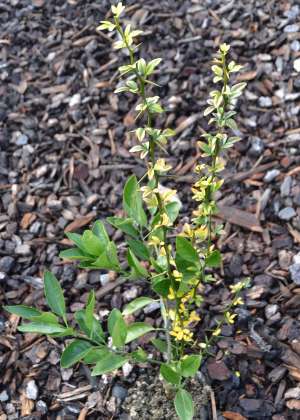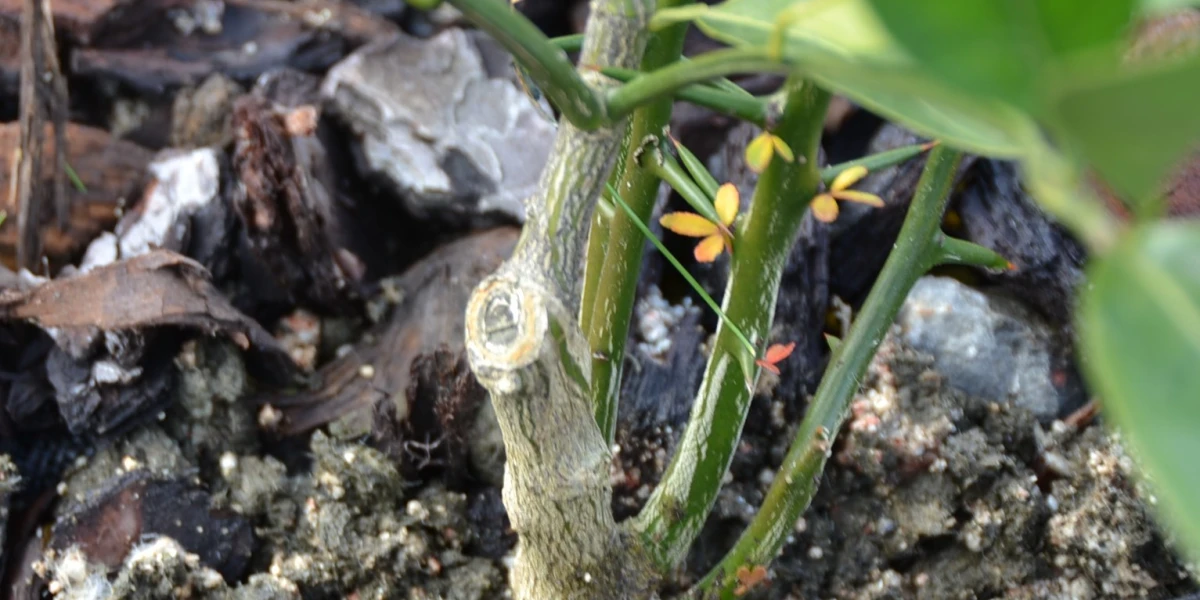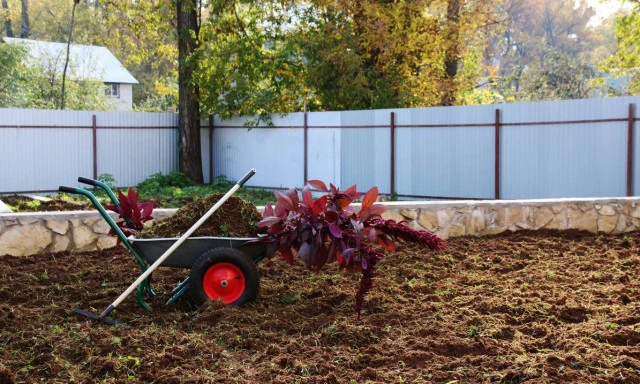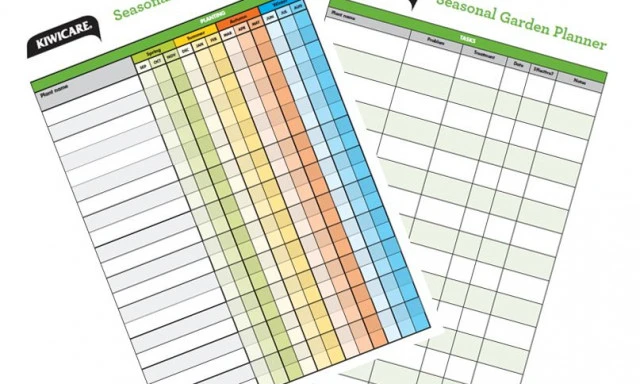What are those Strange Branches Growing from My Tree?
In gardening, grafting is the physical joining together of two varieties of a woody plant. This is often the root of one with the stem and foliage (scion) of another*. This process is useful where one variety produces strong vigorous roots and other produces strong foliar growth and perhaps the best fruit. When grafted together you can get the best of both varieties.
After diagonally cutting a branch from the scion, it is then bound into a shallow cut in the rootstock’s stem. The two parts of the trees will then grow together, with the scion branch now a branch of the rootstock. The join, or graft line, is usually noticeable as a swelling at the join. Trees, and other plants such as roses, have been grafted this way for hundreds of years, but the method is not foolproof. Sometimes grafted trees can revert to their original rootstock form when suckers (shoots) of the rootstock take over and dwarf the scion, or the scion dies. The suckers from the rootstock may look very different from the scion part of the grafted plant. Very different looking plants can be grafted together.

Above: notice the thorns and small yellowing leaves of the suckers of the rootstock of this mandarin tree.
If you notice a sucker emerging from below the graft line (as in the header image) it should be cut off close to the trunk so that it does not take over the plant and use energy that should be going to the scion. Using a sharp, clean pair of secateurs or a knife, cleanly cut the plant sucker as close to the tree as possible leaving the collar (where the tree sucker meets the tree) to help the wound recover.
*Standard roses can be three roses grafted together; a rootstock, the long stem and the branched foliage on top, so it has two grafts, one at the base and another at the top of the stem.
David Brittain
Kiwicare


